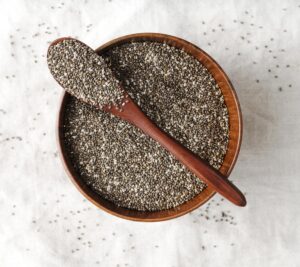Ten Nutraceuticals for Osteoarthritis – A New Era In Pain Management

Osteoarthritis, a progressive joint disease, can become severely debilitating once inflammation sets in. It affects the cartilage between joints, such as the knees, hands, hips, and spine. With irreversible damage to the affected joints, the main focus of therapy is prevention and symptom management to slow disease progression and alleviate pain. Nutraceuticals offer potential relief in this regard.
Pain and discomfort caused by osteoarthritis are highly challenging. Therefore, the primary goal for patients is to find effective pain relief. Research on the role of nutraceuticals in managing osteoarthritis pain is still in its early stages, but promising results have been observed.
What exactly are nutraceuticals? Which specific nutraceuticals are beneficial for managing osteoarthritis pain? Read on to discover scientifically-supported details about this topic.
The Deal About Nutraceuticals
Nutraceuticals, as defined by the European Nutraceutical Association, are concentrated nutritional products that offer health and medical benefits, including disease prevention and treatment. These products contain dietary nutrients and are free from synthetic additives or chemicals. They are often classified as nutritional supplements due to their nutrient content.
Nutraceuticals have been an integral part of traditional medicine throughout human history. Unlike conventional medicine, which can have side effects due to the presence of chemicals, traditional medicine is considered safer and less likely to cause adverse effects.
The term “nutraceutical” combines “nutra” (derived from nutrients) and “ceutical” (derived from pharmaceuticals). Modern medicine distinguishes between food nutrients and pharmaceutical-grade medicines, with each serving a different purpose: nutrients for health and growth, and medicines for treating specific diseases.
The field of nutraceuticals aims to integrate these two elements by focusing on the therapeutic and health-promoting properties of food nutrients. Although the effectiveness of nutraceuticals and other traditional components is still being studied, numerous research studies have suggested their potential in disease prevention.
The same applies to osteoarthritis, where dietary supplements have shown promising results in pain management and disease regression.
How Do Nutraceuticals Work?
Old age often brings stiff, painful joints and limited mobility, especially during harsh winters. Massages and pain-relieving creams become essential items in an elderly person’s medicine cabinet. We tend to accept these conditions as a normal part of aging. However, have you ever considered that our lifestyle and dietary habits from earlier years may have a significant impact on these conditions?
Indeed, the choices we make in terms of nutrition during our younger years can manifest as health issues in old age, excluding those caused by genetic factors. Therefore, the food we consume has a direct influence on our body. The nutrients we intake contribute to our growth, well-being, and can play a crucial role in preventing diseases.
This is where nutraceuticals come into play. Nutraceuticals have a preventive and therapeutic effect on combating the degenerative processes that occur within arthritic joints. Like every cell in our body, the metabolic processes within our joints are regulated by various signals related to breakdown and growth. New cells are produced while old ones are eliminated. The fluid surrounding the joint surfaces is continuously replenished. Arthritis occurs when these regulatory mechanisms become imbalanced.
Nutraceuticals play a vital role in maintaining the balance among these different factors within a joint. Are you curious to know how they work? Read on to discover the mechanisms of action of some important nutraceuticals in this regard.
The Top 10 Nutraceuticals for Managing Osteoarthritis
1. Fish Oil
The same fish oil that helps protect against winter flu has been found effective in reducing pain in osteoarthritis. Fish oil is rich in long-chain n-3 PUFAs (Polyunsaturated Fatty Acids), containing 18% EPA (Eicosapentaenoic acid) and 12% DHA (Docosahexaenoic acid). When supplemented, fish oil shows a dose-dependent decrease in the signs and symptoms of arthritis.
In an arthritic joint, the immune response is triggered by prostaglandin E2 and leukotriene B4, which are critical mediators of inflammation within cells. EPA and DHA found in fish oil have been shown to suppress these pro-inflammatory elements. This leads to modified T-Cell reactivity, increased activity of immune cells that inhibit the production of reactive oxygen species, and reduced cytokine production by macrophages. Overall, this results in a modified immune and inflammatory response within the joint.
Fish oil also reduces the presence of arachidonic acid (ARA), an omega-6 (n-6) PUFA that acts as another pro-inflammatory element in arthritic joints.
It typically takes a minimum of three months of fish oil supplementation to observe results, such as decreased joint pain and morning stiffness. So, while continuing to take NSAIDs (Non-Steroidal Anti-Inflammatory Drugs) as prescribed by your doctor, rest assured that fish oil supplementation will eventually help reduce the need for NSAIDs.
2. Glycosaminoglycans (GAGs)
Hyaluronic acid, glucosamine sulfate, and chondroitin sulfate, collectively known as Glycosaminoglycans (GAGs), are naturally produced by joint cells. They are abundant in the extracellular medium and synovial fluid surrounding the joint, playing a crucial role in protecting the joint through their antioxidant and anti-inflammatory properties.
Both clinical and preclinical studies have demonstrated that supplementing the diet with glucosamine sulfate promotes the synthesis of cartilage within the joints. This leads to improved joint function and structure, and significant reduction in pain for patients. Overall, Glycosaminoglycans contribute to the prevention of disease progression in the joints.
3. Olive Oil
Have you ever noticed your grandmother massaging her aching knees with olive oil? Well, there’s actually a scientific reason behind it that your grandmother may not be aware of. Olive oil contains phytochemicals, which are plant-based compounds that have a powerful anti-inflammatory effect. The Phenolic compounds and Monounsaturated fatty acids (MUFAs) found in olive oil are believed to work wonders for relieving your grandmother’s knee joint pain.
Olive oil is widely used in the Mediterranean diet and is often recommended as an essential component of the DASH diet (Dietary Approaches to Stop Hypertension) for heart patients. While it is not commonly prescribed specifically for joint pain relief in arthritis due to a lack of clinical trials, a randomized clinical trial showed that the topical application of olive oil can improve pain and physical function in cases of knee osteoarthritis.
Furthermore, an animal study demonstrated that a diet supplemented with olive oil can enhance cartilage recovery after a portion of the cartilage is removed.
4. Methionine
Methionine is an essential amino acid that our bodies cannot produce and must be obtained through our diet. Its active form, known as S-adenosylmethionine (SAMe), plays a crucial role in regulating the level of glutathione, an antioxidant enzyme, within our cells. SAMe acts as a potent antioxidant, while glutathione helps protect against degenerative processes in the joints (9).
SAMe plays a protective role by inhibiting enzymatic processes that contribute to cell death within the joints. Additionally, research studies have demonstrated the positive effects of SAMe on cartilage repair and synthesis in joint cells. It works by inhibiting cartilage-degrading enzymes while promoting cartilage repair.
Clinical evidence suggests that patients with chronic arthritic pain tend to have better long-term outcomes when supplemented with SAMe compared to nonsteroidal anti-inflammatory drugs (NSAIDs). If you have advanced osteoarthritis, a simple olive oil massage may not be sufficient. Consider supplementing with methionine to potentially alleviate symptoms.
5. Un-denatured Type II Collagen and Collagen Peptide
Collagen, the most abundant protein in our bodies, is found in various tissues such as skin, bones, cartilage, and tendons. In our bones, collagen makes up 30-40% of the bone matrix, with the remaining 60-70% consisting of minerals and water. However, collagen can undergo decay and degeneration due to various factors. To supplement collagen, we can use its hydrolysate form or undenatured Type II collagen, both of which are derived from animal collagen tissue.
Research has shown that dietary supplements containing UC-II, an undenatured type II collagen, can improve joint mobility and reduce pain and stiffness in osteoarthritis patients. UC-II helps regulate immune mechanisms and reduces the inflammatory response against joint cartilage. On the other hand, hydrolysate collagen promotes collagen synthesis and enhances the levels of glycosaminoglycans (GAGs), which can complement the pain-relieving and joint regeneration processes.

6. Avocado/Soy Un-saponifiable (ASU)
Among the numerous botanical extracts studied for managing osteoarthritis pain, avocado and soybean-derived fat fractions known as ASUs have shown promising results. ASUs possess cell-repairing and anti-inflammatory properties specifically targeted at bone cells. They stimulate the production of growth factors and collagen, which contribute to the strengthening of bone structural units.
7. Curcumin
Have you heard of golden milk? Golden milk, a popular herbal beverage, features turmeric as a key ingredient. Traditional medicine has long recognized the various health benefits associated with golden milk. The active component of turmeric, curcumin, plays a significant role in Asian cuisine. Curcumin possesses potent anti-inflammatory and antioxidant properties, effectively reducing arthritis pain by combating the production of harmful free radicals in the body.
8. Ginger
Ginger, a beloved ingredient in Asian cuisine and holistic medicine, offers powerful anti-inflammatory effects when it comes to alleviating osteoarthritis-related joint issues. The effectiveness of ginger extracts in this regard is supported by scientific evidence (15).
9. Devil’s Claw Extract
This extract from a South African plant has demonstrated great potential in effectively managing osteoarthritis in the knee and hip joints. It is known for its adaptability and minimal side effects, making it a promising option.
10. Boswellia
Boswellia, also known as Indian frankincense, is a genus of trees belonging to the Burseraceae family. The genus comprises several species, but the most well-known and commonly used species is Boswellia serrata. Boswellia trees are native to the dry regions of India, Northern Africa, and the Middle East.
Boswellia has been traditionally used in Ayurvedic medicine for centuries due to its medicinal properties. The resin extracted from the bark of Boswellia trees contains various bioactive compounds, notably boswellic acids. These acids have been studied for their potential health benefits.
One of the most recognized applications of Boswellia is its use as an anti-inflammatory agent. Boswellic acids have been found to inhibit certain enzymes that contribute to inflammation in the body, making it useful in managing conditions such as arthritis, joint pain, and other inflammatory disorders.
Indeed, inflammation is a primary source of pain in osteoarthritic joints, and addressing it is crucial for symptom relief. Randomized clinical trials have demonstrated the efficacy of oleoresin derived from Boswellia serrata in alleviating pain, improving mobility, and reducing swelling in individuals with knee osteoarthritis. By supplementing with oleoresins rich in boswellic acid, one can harness its powerful anti-inflammatory properties, which extend to the joints and offer relief.
Takeaway
The pain caused by osteoarthritis can severely impact a person’s functionality and mobility. While conventional treatments may provide partial relief, their side effects can limit their long-term use. Nutraceuticals have emerged as a promising solution, supported by scientific research, to enhance joint functionality and manage pain in individuals with osteoarthritis. Although still in the early stages of research, the findings highlight the favorable balance between benefits and risks associated with using dietary supplements, along with their cost-effectiveness for all.






